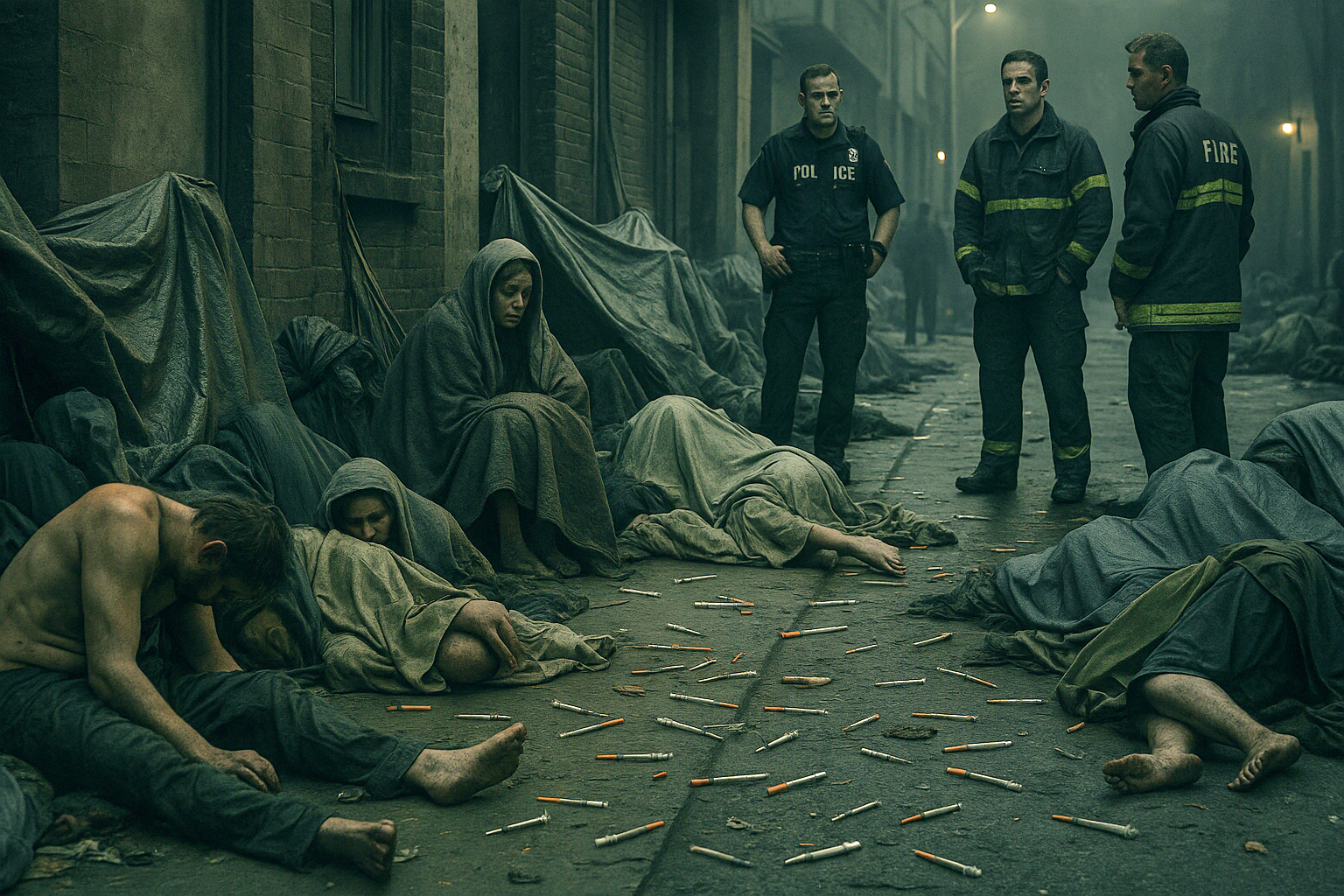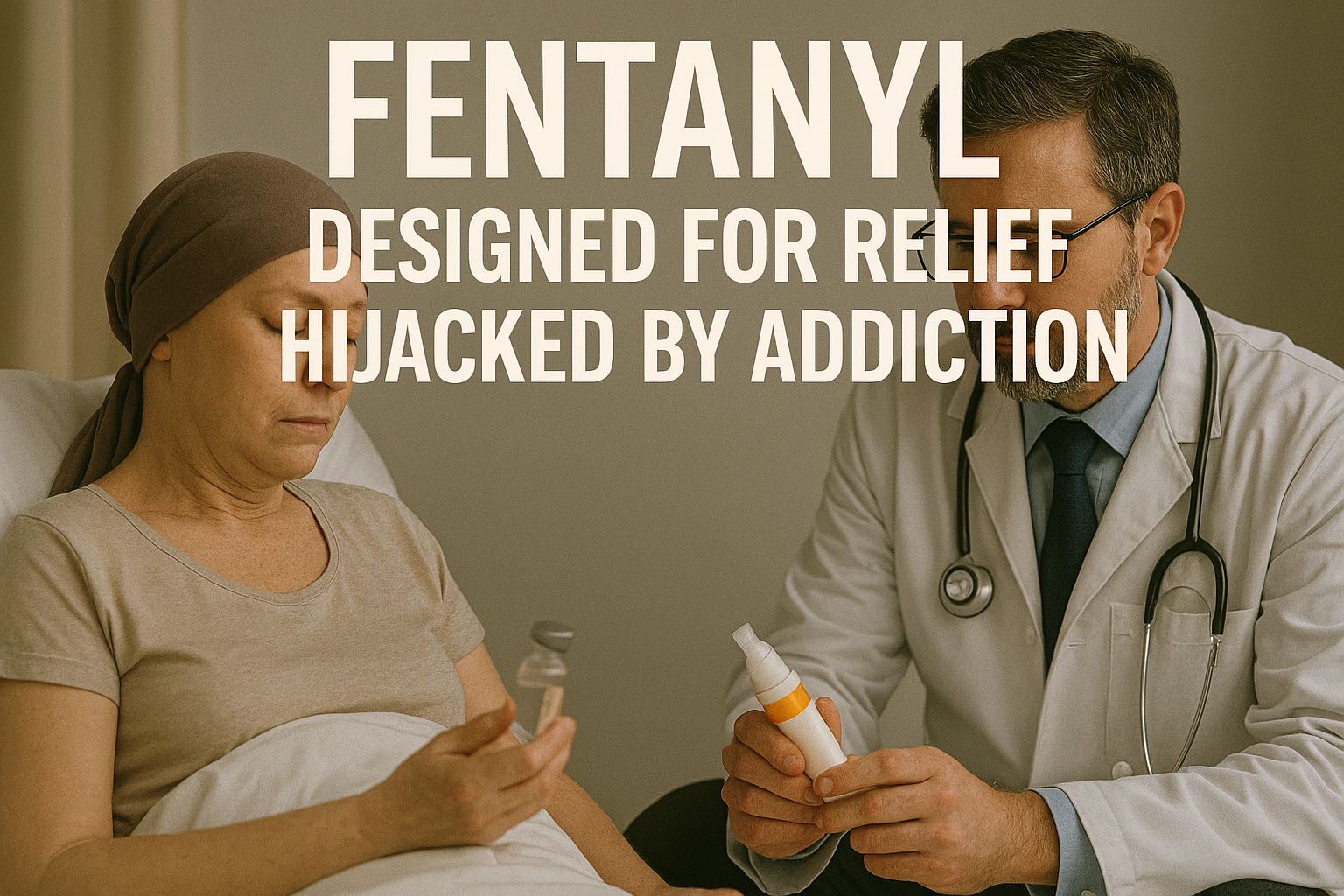Quote: “Fentanyl isn’t just stronger. It’s faster, cheaper, deadlier.”
Chapter 3: Fentanyl – Designed for Relief, Hijacked by Addiction
Fentanyl was never meant to be this.
Invented in 1959 by Belgian chemist Paul Janssen, fentanyl was a breakthrough—a synthetic opioid 50 to 100 times more potent than morphine. For decades, it was a tool of precision: a controlled substance used in surgeries, cancer care, and hospice settings. When used professionally, it provided critical pain relief where nothing else could.
But its power was always its danger.
How Fentanyl Works
Unlike other opioids that take time to metabolize, fentanyl binds rapidly to the brain’s opioid receptors. It delivers an almost immediate flood of euphoria, sedation, and, in many cases, respiratory suppression. A dose measured in micrograms, not milligrams, can stop a person’s breathing.
A single patch or vial can treat pain—or kill in seconds if misused.
From Hospitals to Street Corners
Fentanyl’s medical roots didn’t protect it from the black market. Its potency made it an attractive target for illegal labs, especially in China and Mexico, where analogs (chemical cousins) were developed faster than they could be regulated. These analogs—some even more potent than fentanyl—flooded the streets under names like carfentanil and acetylfentanyl.
Drug dealers realized something else: fentanyl was cheap. Much cheaper than heroin. Easier to smuggle. Easier to mix.
Soon, it was cut into everything: heroin, cocaine, counterfeit pills. Most users didn’t even know they were taking it—until they stopped breathing.
A Perfect Storm of Death
In 2023, fentanyl was linked to over 70,000 overdose deaths in the U.S. alone. In Canada, it’s estimated to be present in over 85% of toxic drug deaths. British Columbia, a province with just over 5 million people, declared a public health emergency. But the deaths continued.
Fentanyl is unforgiving. It doesn’t allow time for regret. By the time the user realizes the dose was too much, they’re already on the floor.
Narcan: The New Lifeline
Naloxone (Narcan) can reverse fentanyl overdoses, but only if it arrives in time. In many cases, multiple doses are needed. Communities are now handing out free naloxone kits as casually as condoms.
But even this isn’t enough. First responders now treat every call as potentially lethal—not just to the user, but to themselves. Accidental exposure to airborne fentanyl powder can cause harm. The drug is that potent.
How Did We Let This Happen?
Because fentanyl filled a void. As governments cracked down on prescription opioids, users turned to the streets. Heroin was too weak, too expensive. Fentanyl became the new standard—lethal, but accessible.
This wasn’t just an escalation. It was a collapse.
We allowed this substance, created with surgical precision, to become the default drug of despair.
In the next chapter, we’ll look at the personal wreckage fentanyl leaves behind: jobs lost, families broken, and dignity erased. Because while fentanyl kills quickly, it also kills slowly—through everything it takes before the final breath.

